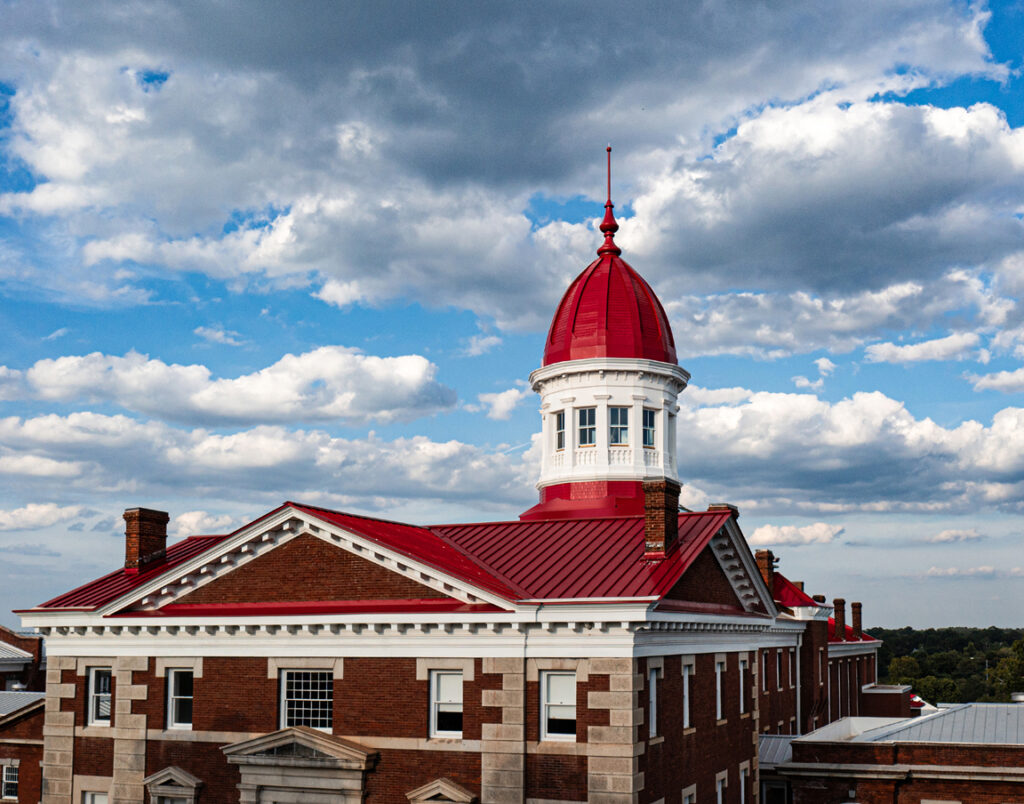Rebuilding the Cupola
Photo by VAN KORNEGAY
By Mary Green Brush, Columbia Metropolitan magazine

When more than a century of history went up in flames, Columbians gasped in disbelief as the beautiful cupola atop the former S.C. State Hospital’s historic Babcock Building collapsed to the basement of the four-story edifice in 2020. Suddenly a key landmark in the city’s skyline was gone … and the planned renovation and reuse of the historic project was in jeopardy.
Today, the reconstructed cupola, a character-defining architectural element of the National Register of Historic Places building, is back in place — looking much as it did before disaster struck. In the meantime, renovation of the 254,000-square-foot building into 208 apartments is nearly at completion as a key component of the BullStreet District. At a dedication of the cupola and signing of the spire by officials in August 2023, Hughes Development Corporation’s Bob Hughes told those present that “change takes perseverance, commitment, belief, courage, and a little stubbornness.”
Even before the historic cupola burned literally to the ground, many had doubts about the viability of rehabilitating the abandoned building, which opened in 1858. Bob approached possibly the one and only company willing to take on the historic renovations, reuse, and ownership of the would-be apartment homes — Clachan Properties of Richmond, Virginia.
“The cupola is perhaps the greatest and most obvious character-defining object of the building,” says John Sherrer, director of preservation for Historic Columbia, a leading proponent of the rehabilitation project.
Access to state and federal funding, tax credits, and abatements was absolutely required for the project’s feasibility, says Hugh Shytle, president of Clachan Properties. “We’re real estate people. Historic Columbia has done a tremendous job of keeping the public engaged and enthusiastic.”
John, who considers himself fortunate to have climbed in the old cupola, says it appears the same but by necessity was built differently in three parts — the clerestory above the roof ridge, the dome, and the spire — by three different companies. An early 20th-century postcard depicted the cupola as green; however, a circa 1955 aerial photo showed a silver-painted roof. At the time of the fire, the cupola was finished in red paint. No climbing is allowed, but you can enjoy a view through the reproduction stained glass windows in the former chapel or through restored windows where patients looked out over the grounds at the city long ago.
You must be logged in to post a comment.